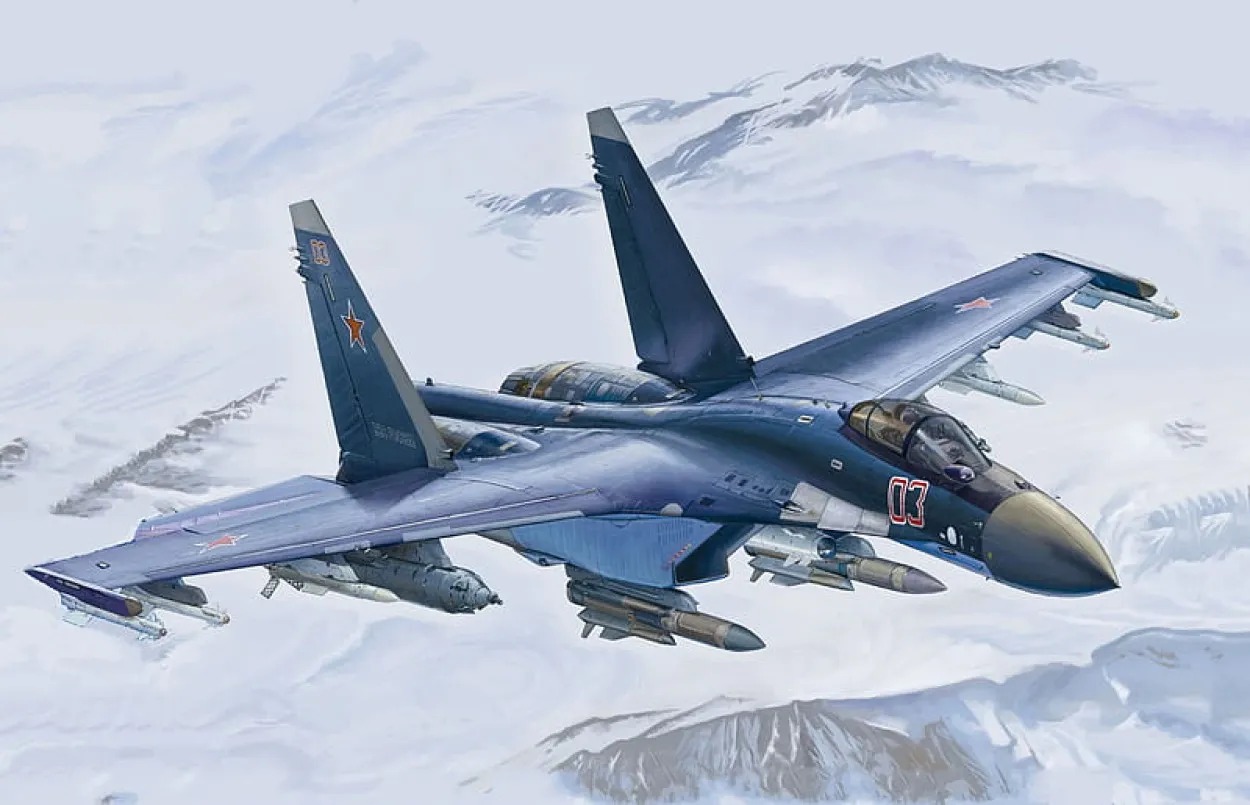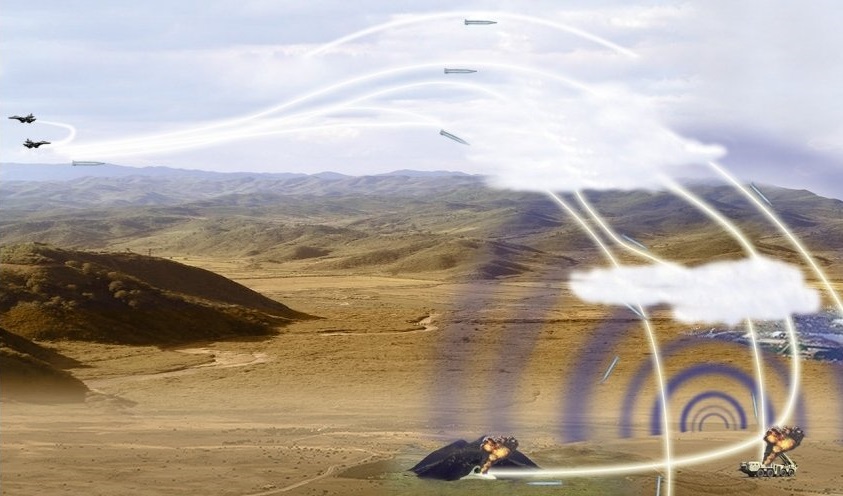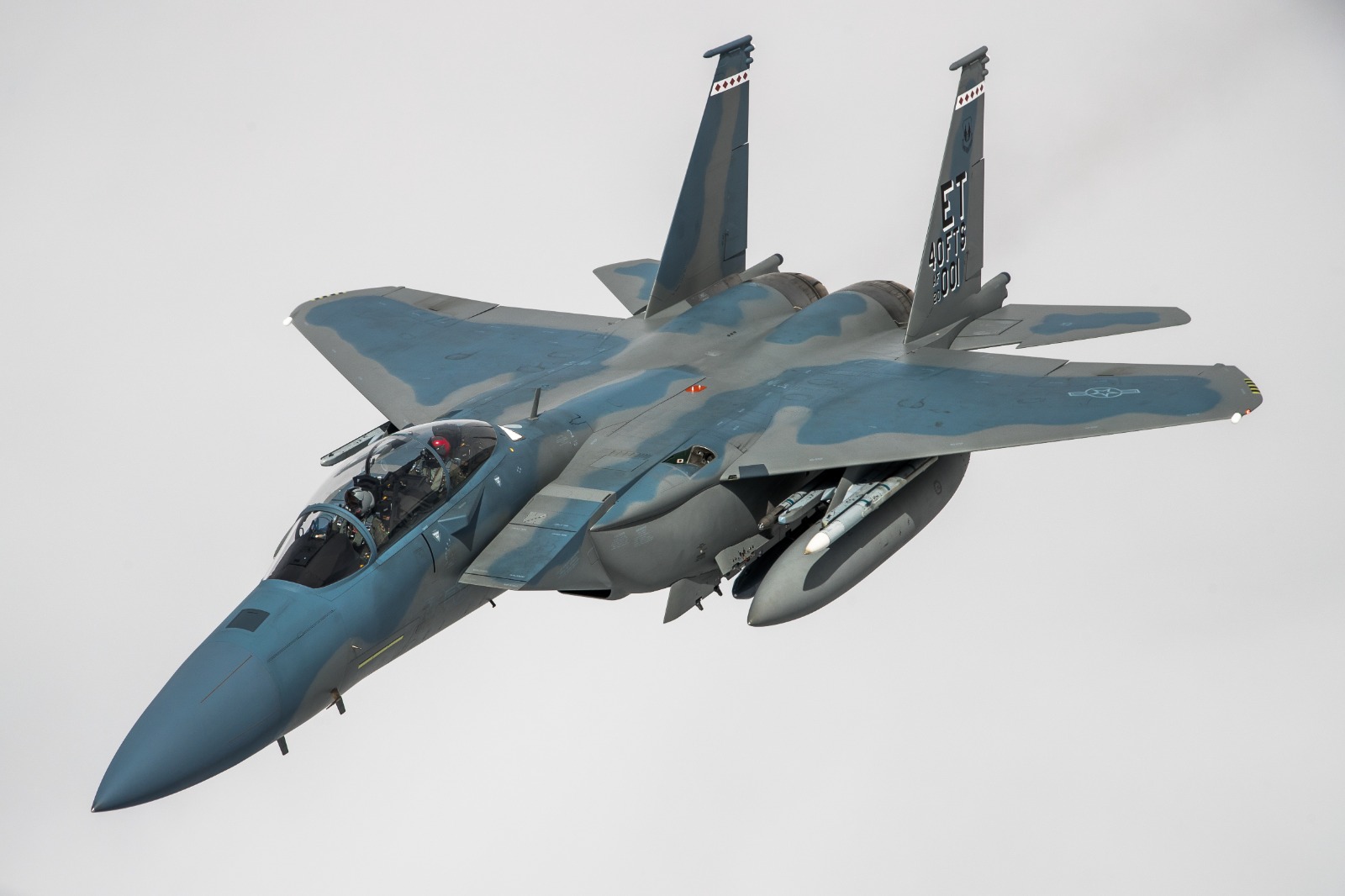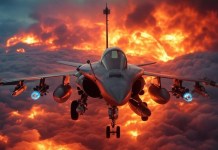With another round of escalation expected between Iran and Israel following the former’s missile barrage in retaliation to its embassy being bombed by the Jewish nation, experts have laid out a series of scenarios of how Tel Aviv’s and Tehran’s militaries might clash.
The tactical situations involve Israeli Air Force (IsAF) F-15Is releasing air-launched ballistic missiles (ALBM) to saturate Iranian air defenses. Iran might increase the tempo and lethality of its missile strikes—rather than the largely symbolic salvo earlier this week. Two interesting observations about the military element in the two countries’ international diplomacy, however, come into focus.
First is the claim that Israel has been pressuring Russia to stall and delay the sale of Su-35S Generation 4.5 fighters to Iran, which poses a severe threat to IsAF’s F-15Is and, to a certain extent, its F-35s.
Secondly, reports say Iran is qualitatively enhancing its existing and future missile arsenals with sophisticated Russian technology. This is in return for parting with its own cheap, mass-produced kamikaze drone technology like the Shahed-136 (rechristened Geranium-2 by Russia).
Russian Tech Helps Iranian Missiles
The second part first. The Washington Post (WaPo), referring to leaked emails and documents, reported how an Iranian delegation was hosted at Russian arms maker NPP Yekaterinburg in March 2023, showcasing “scientific and technical, potential and production capabilities” that Russia could offer Iran.
Intelligence officials told WaPo that Russia will “provide its ally with advanced fighter jets and air defense technology, assets that could help Tehran harden its defenses against any future airstrike by Israel or the United States.”

“The weapons deals, some details of which have not been reported previously, are part of a broader collaboration that includes co-production of military drones inside Russia, the sharing of anti-jamming technology, and real-time battlefield assessments of weapons deployed against NATO-equipped forces in Ukraine. The cooperation is reaping substantial benefits for both countries, elevating Iran’s status to a strategic partner,” WaPo said.
This validates a previous EurAsian Times analysis that touched upon the unprecedented defense technical heft being given to Russo-Iranian relations amid their mutually shared hostility with the West. That report noted how Russia had manufactured and used its own iteration of the Shahed 136 (Geran-2) to devastating effect in Ukraine after acquiring the full technology and reverse engineering the UAV with the help of Iranian engineers.
It is now likely to return the favor by parting with cutting-edge missile propulsion, target seeker, guidance and navigation technology. The conclusions were based on comments of Russian and Iranian defense officials following the first-of-its-kind visit of Moscow’s defense minister Sergei Shoigu to Iran in September 2023, where he was shown a series of missiles and combat UAVs.
On a different note, Russia is also pursuing a similar partnership with North Korea. While using the North’s massive stockpile of artillery ammunition, it can be said to have lent technical assistance to Pyongyang’s Hwasong-16B Hypersonic Glide Vehicle (HGV).
Israeli F-15s To ‘ROCK’ Iranian Air Defenses?
‘Patarames,’ a handle on X (formerly Twitter) that specializes in analyzing Iranian military technology and doctrine, shared a computer-generated graphic from Israel’s Rafael Advanced Systems, showing F-15Is firing the ROCKS air-to-surface (ASM) to “saturate” Iranian air defenses.

The brochure described the ROCKS as an “all-weather, day-night” stand-off ASM that can, with “either a penetration or blast fragmentation warhead, destroy above-ground or well-protected underground targets in heavily surface-to-air defended areas.”
The pilot feeds target information (coordinates, impact angle, azimuth, topographic imagery data, and fuse delays) into the missile prior to launch.
It is not clear if this data can be loaded into the missile on the ground prior to the mission, like the British-French SCALP-EG/Storm Shadow air-launched cruise missile (ALCM) Ukraine fires from its Su-24M ground attack jets. However, it does share the terminal-stage target acquisition and approach with a “scene-matching technology,” to “overcome GPS jamming scenarios.”
Images of the target (typically a building or fortified structure) and its surroundings are loaded into the missile’s memory. The missile’s optical seeker then matches the live image with the stored picture to confirm the target identity and commences its attack run. SCALP and Storm Shadow use the Digital Scene Matching Area Correlator (DSMAC) technology, which operates on the same principle.
The ROCKS missile’s image correlation technology and electro-optical seeker are particularly aided by an Automatic Target Acquisition algorithm that also helps it “overcome anti-radiation technologies, GPS jamming, navigation, and Target Location Errors.” In its mid-course trajectory, ROCKS uses an Inertial Navigation System (INS)/GPS.
The illustrated image shows an F-15I firing ROCKS missiles that are striking long-range SAM sites. One missile is also seen hitting the base of a mountain—possibly denoting an underground Iranian nuclear site. It is seen diving down and turning 180 degrees to hit the base of the mountain.
The F-15 is approaching the target from behind the mountain, representing the missile’s maneuvering capability and range, which keep the launch aircraft well outside the range of SAMs.
“Compared to Natanz, Arak, and Esfahan Uranium Conversion Facility (UCF), Fordow uranium enrichment plant would be immune to such weapons. Yet, an unknown larger variant could be carried by a single F-15 and possess a higher penetration capability warhead to damage entrances. (This can put them) UGF out of action for longer,” the Patarames said.
F-15I Vs. Su-35S
The F-15Is might fly a low-altitude “terrain-masking” flight profile over Jordan, “pop up over Iraq,” “dash to Mach 1.5,” climb to an altitude of “14 km,” and launch “two ROCKS” missiles. For the “penetrating effect” required for underground targets, they can retain an “impact velocity” of “Mach 5.”
In this context, Patarames said, “This weapon class and capability should be the reason why Israel used all its leverage on Russia to cancel or at least delay the delivery of Su-35. Those could easily thwart the incoming attacks and force the F-15 to jettison their heavy ALBM (Air-Launched Ballistic Missile) to defend themselves.”
Iran’s Cold War-era US-made F-14 Tomcats, F-4E Phantom IIs have been suffering severe maintainability and flight-worthiness issues as debilitating economic and military-trade sanctions prevent it from accessing spares.
The roundabout measures to access aerospace parts from intermediate, smaller aviation services companies to circumvent sanctions became unsustainable after US law enforcement authorities busted the rackets and arrested several American Iranians in the late 1990s and early 2000s.
Its Soviet-origin MiG-29s, meanwhile, are too few to make any noticeable difference. This situation motivated the far-sighted Iranians to compensate by focusing on a missile and drone-centric military doctrine in the 1980s.
The Generation 4.5 Su-35S would be the most advanced jet in the Islamic Republic of Iran Air Force (IRIAF) and comparable to the Israeli F-15I or Qatari Eurofighter Typhoon.
The Su-35S with its N035 Irbis-E passive electronically-scanned array (PESA) radar can detect aerial targets at a range of 400 km, provide high-resolution ground images in synthetic aperture mode, has an OLS-35 electro-optical targeting system and Khibiny-M electronic warfare (EW), that comprises of pods on the wingtips and sensors around the aircraft.
The jet can be used for purely air superiority modes to tackle the F-15, which as discussed in another EurAsian Times piece, would most likely be employed as a ‘missile truck’ – launching air-to-ground and air-to-air missiles based on targeting information received from its stealth F-35Is.
IsAF would find it difficult to conduct long-range standoff strikes, while Iranian ground-based AD systems like the Bavar-373 – which it says is comparable to the Russian S-400 – would be free to tackle other Israeli aircraft and land strike munitions.

Israel Eyes Iranian Nuclear Sites
EurAsian Times had analyzed how Iran’s nuclear facilities might be Israel’s primary target, which both parties perceive lends Tehran very long-term geopolitical and diplomatic leverage before the West.
Tel Aviv “might have far deeper and long-term goals for which it might be willing to risk a short, sharp, wider regional war,” that article said, which discussed the IsAF’s latest and previous exercises that targeted Iran’s nuclear facilities.
This implied that both sides face mutual military advantages and disadvantages, “Israel has a vastly qualitatively superior air force with Generation 4.5 and Generation 5 jets. Iran makes up for its lack of conventional strength with a massive ground army, a stockpile of tanks and artillery, and a production capacity that far outstrips Israel,” the EurAsian Times analysis said.
It also has an enormous and diverse inventory of tactical conventional and nuclear ballistic missiles and drones. “Israel can strike once and hit Iran but not meaningfully continue a campaign,” Patarames said.
- The author can be reached at satamp@gmail.com
- Follow EurAsian Times on Google News




